Renewable energy is the fastest growing energy source today, expanding in worldwide volume by an average of
40 percent per year. Wind and solar energy are examples of the alternative fuels powering an increasing number of green initiatives worldwide. In particular, solar energy is an example of one of the most critical renewable energy sources driving innovation. With pollution and climate change as top concerns, solar energy has become one of the go-to resources for clean, renewable energy.
Not only does solar power reduce energy costs, but it also helps reduce our dependance on fossil fuels. Internet of Things technology advancements have expanded solar energy into a clean solution for a wide range of applications. Examples of solar energy and IoT include solar-powered electric vehicle charging stations, solar-fueled smart sensors in production and distribution devices, and solar vehicles.
In this blog post, we explore how solar energy technology and IoT come together to create a dynamic duo in the renewable energy space, using some of Digi’s customer stories to demonstrate the innovative ways in which solar energy is at work today. You can find more application examples, by industry, in the Customer Stories section of the Digi site.

IoT in Solar Tracking
Suntrack® by P4Q is one example of solar energy management. As a leader in PV solar tracker controllers, P4Q has enabled customers to remotely monitor solar panel fields across the globe in real time. With algorithms that can pinpoint the sun’s location by date and time and factor in weather forecasts, Suntrack communicates with a tracker control unit beneath the panel to carefully readjust the solar panel to the optimal position.

This system is paired with a Digi XBee® 3 Zigbee 3.0 module that adds connectivity in a compact, low-power, low-profile footprint. Building on industry-leading technology, pre-certified Digi XBee 3 offers the flexibility to switch between multiple frequencies and wireless protocols as needed. This has given the green company the opportunity to keep close eyes on more than 1,150 PV solar sites worldwide.
You can read the full P4Q story here.
IoT in Solar Vehicles
Whether it’s driving your kids home from school or up north to your cabin, vehicles are an everyday necessity. But our dependence on gas-powered vehicles is one of the greatest challenges for the environment. Just one gallon of gasoline in a car produces about 19 pounds of carbon dioxide. According to a study conducted by National Geographic, cars produce about one-third of all U.S. air pollution. “The smog, carbon monoxide, and other toxins emitted by vehicles are especially troubling because they leave tailpipes at street level, where humans breathe the polluted air directly into their lungs.”
What does the future hold when it comes to alternative sources of energy for vehicles? We all know that electric vehicles are growing in popularity. But did you know that solar-powered vehicles may be an answer as well?
Today, student groups around the world are learning about engineering, electronic design, wireless communications and more by designing the solar-powered vehicles of tomorrow. Let’s take a look at some of these projects, which offer excellent examples of solar energy and IoT at work.
University of Minnesota Solar Vehicle Project
University of Minnesota’s student-run Solar Vehicle Project aims to refine car designs and rethink how people can travel in an efficient, comfortable, and practical manner using only power derived from its on-board solar panels. Integrating multiple disciplines of study – from mechanical engineering to electrical engineering and wireless communications, these innovative vehicles demonstrate how we may one day be able to eliminate the large carbon footprint of gas-powered vehicles.
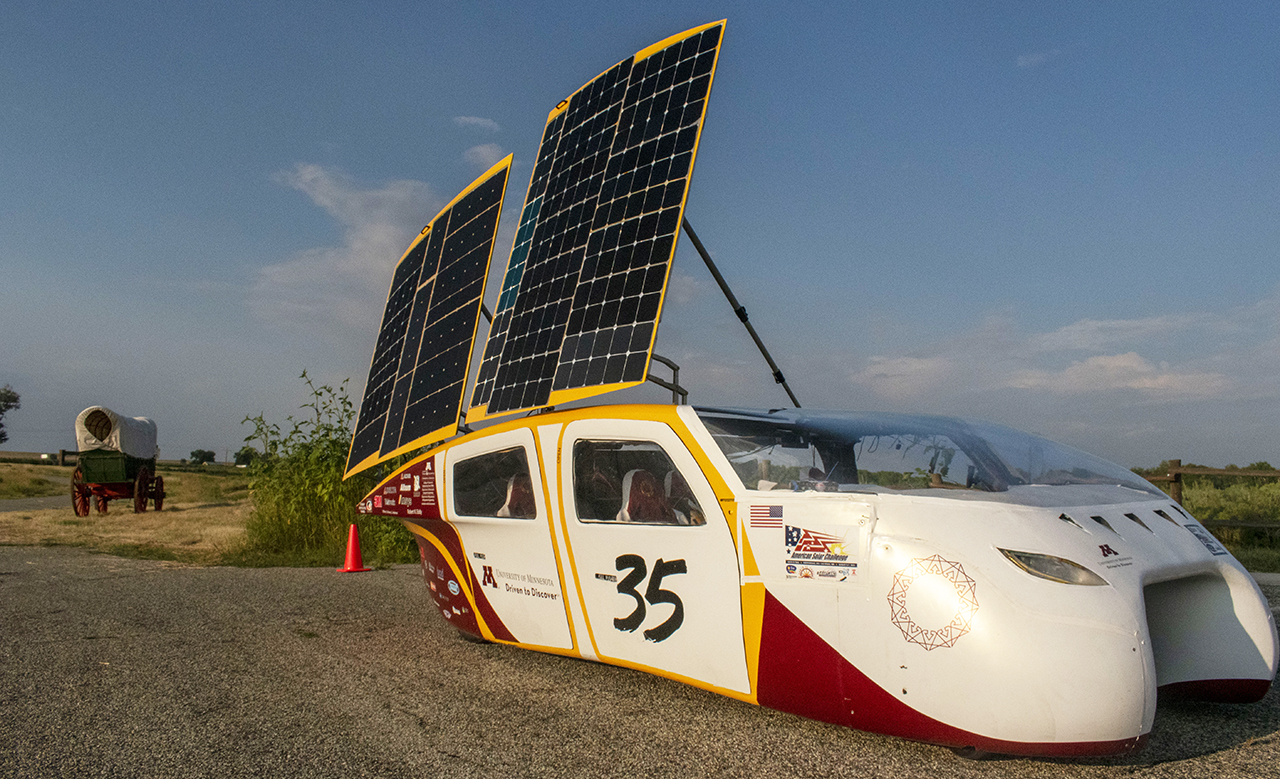
The team applies their innovative engineering to make solar-powered automobiles a pragmatic reality. XBee® 900 MHz modems help the team track critical data during testing and competitions where over the course of several decades, the UMNSVP has built a strong track record. In the team's history:
- No car has ever failed to qualify for or finish a race
- They’ve raced in five different countries, with thrilling results:
You can read the full Minnesota Solar Vehicle story here.
Illini Solar Car Team
The Illini Solar Car team is another great example of solar energy at work. Competitors with the University of Minnesota, the team has designed, built, and raced unique solar-powered cars that are helping the world envision a zero-carbon footprint future for personal transportation.
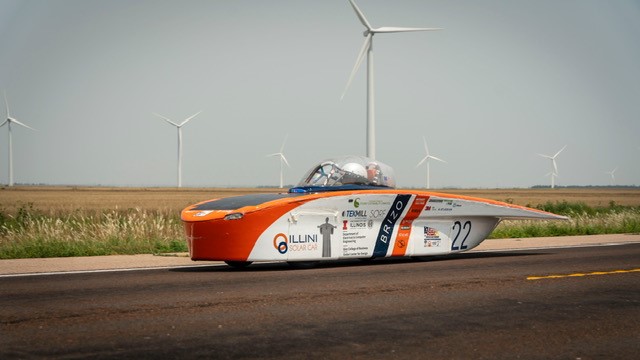
The races these solar powered cars take part in are long, traveling around 1,500 miles over several days. This makes monitoring all systems crucial. This includes the vehicle’s motor, battery consumption, temperature sensors, and electronics. If these systems exceed their safe zones, they can experience thermal runaway that destroys the battery. The Digi XBee® PRO RF modem helps team members keep a careful eye on their vehicle to optimize speed, distance, and performance.
You can read the full Illini Solar Car story here.
AGH Solar Boat Project
Solar power for vehicles is not restricted to cars, as demonstrated by the AGH solar boat team. Led by a student team from AGH University of Science and Technology in Krakow, the project aims to build zero-emission electric boats that use 100% renewable solar energy.

For this project, the team utilized two variants of the Digi XBee® SX 868 RF module, both of which have a long working range and high data transfer rates. Digi XBee SX 868 modules operate in the 863-870 MHz range, delivering excellent performance and interference immunity. These flexible modules incorporate the DigiMesh® protocol, but can also use the point-to-multipoint protocol.
If the AGH Solar Boat team's vision comes true, autonomous and zero emission boats that vastly reduce pollution may become the future of maritime and inland waterway transport. Using sensors and advanced control systems, the boats are completely autonomous. And with photovoltaic panels and lithium-ion batteries, they do not need to port for fuel loading. All this makes the autonomous boat an ecological boat with unlimited range.
You can read the full story AGH Solar Boat story here.
Example of Solar Energy in Vegetation Management
Even on sunny days, photovoltaic solar panels can’t generate environmentally friendly electricity if they’re obscured by grasses, weeds, and other wild vegetation. San Antonio-based Renu Robotics is revolutionizing the way solar energy facilities perform vegetation management. With a sophisticated, autonomous, electric mowing robot, the company helps utility-scale solar power plants control weeds, grasses, and other vegetation from growing and obscuring solar panels.
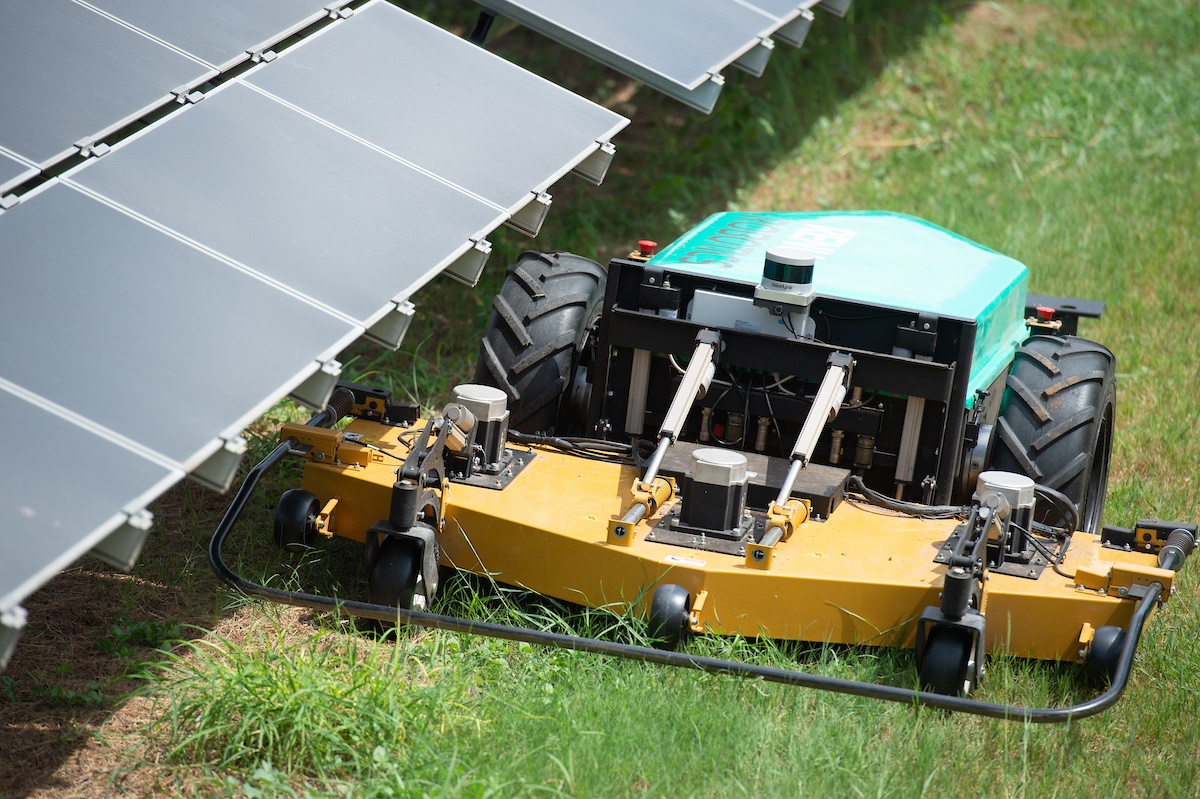
The “Renubot” is a mower/tractor that uses artificial intelligence, powerful batteries, wireless communications, and remote management to mow between rows of photovoltaic sensors, keeping vegetation at acceptable lengths. Renubot is assembled with integrated wireless communications from the Digi XBee® PRO 900HP — an embedded module that provides best-in-class wireless connectivity to devices. Using the mesh-networking capabilities, easy integration, and range of frequencies supported in the Digi XBee 900HP PRO, Renubot can span across hundreds of acres.
You can read the full Renu Robotics story here.
Examples of Solar Power Management in Residential Applications
As Hawaii is one of the most fossil-fuel-dependent states in the U.S., there is a need for change. A brighter future requires solely relying on renewable and alternative fuels like solar and wind power, though, how is that possible? Aiming to collect and distribute solar energy more efficiently, E-GEAR has developed its innovative Energy Management Controller with the help of Digi Wireless Design Services. With the help of projects such as this example of solar energy and IoT, we can help meet Hawaii’s Clean Energy Initiative to transition the 50th state to 100% clean energy by 2045.
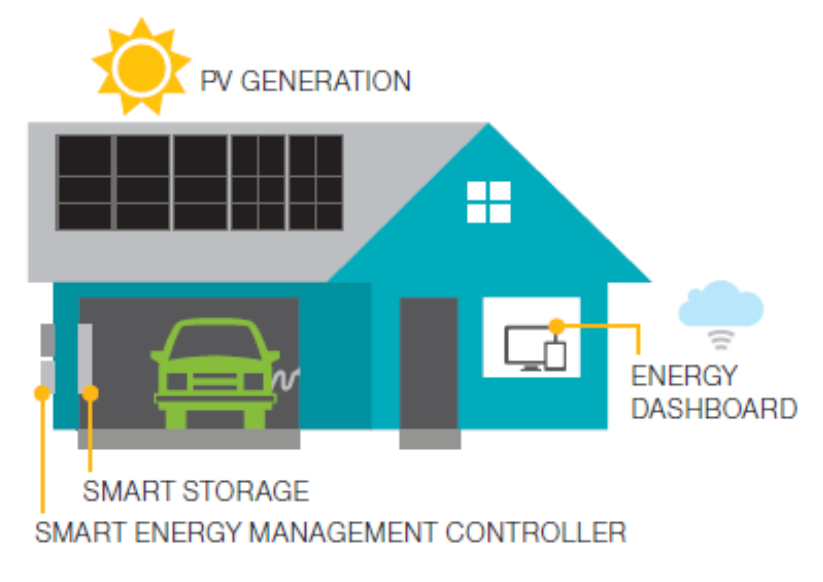
The Energy Management Controller (EMC) includes proprietary software that calculates energy flow and compensates for real-time fluctuations in solar generation and home consumption, to either capture excess energy or put out enough power to the grid to smooth out the variations in generation/consumption. The EMC also includes cloud connectivity and dashboard controls that enable both the homeowner and electrical utility to see real-time data, remotely control the system, and take appropriate actions.
You can read the full E-GEAR story here.
Expanding Solar Power Possibilities in the Third World
In Sub-Sahara Africa, roughly 500 million people live without access to electricity. The challenges of installing a power grid in remote and undeveloped areas are numerous. Devergy is a social enterprise committed to providing an affordable and reliable source of energy to low-income people in developing countries, a great example of solar energy giving back. Founded in 2010, the service is based on village-sized energy micro-grids that provide solar power to households and businesses for the use of everyday products like lights and appliances such as refrigerators, TVs and radios.
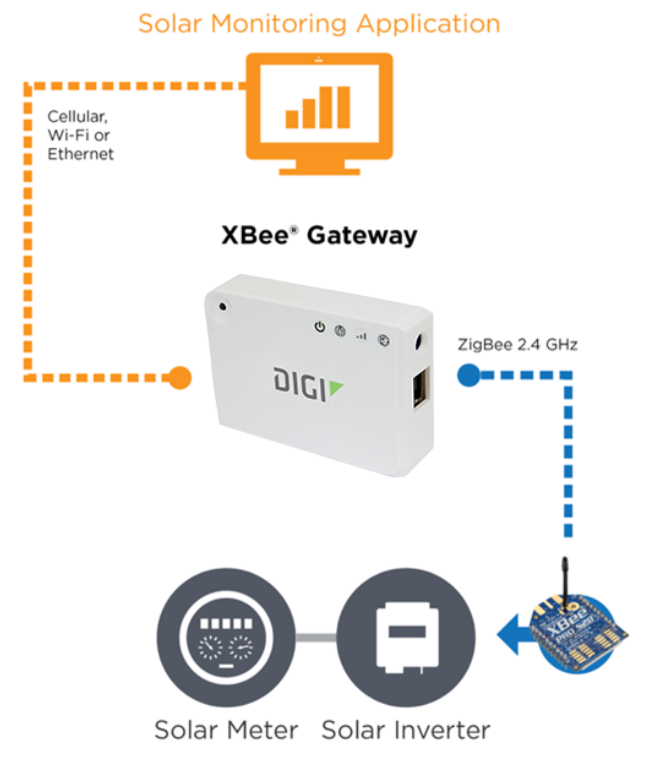
Devergy uses Digi XBee® technology for the communication network in its grids. Hundreds of nodes are connected with XBee — making the solar micro-grids smart, cost effective and manageable. They also rely on Digi gateways for Zigbee to GPRS capabilities, enabling Devergy to deliver their services to the market faster. With the help of Digi products, Devergy has provided a clean, renewable, and reliable source of energy, that is also substantially more affordable.
You can read the full Devergy story here.
IoT applications solar energy are vast and growing. These example use cases provide an overview of the range of solar projects being developed by innovators across a range of industries.
Next Steps